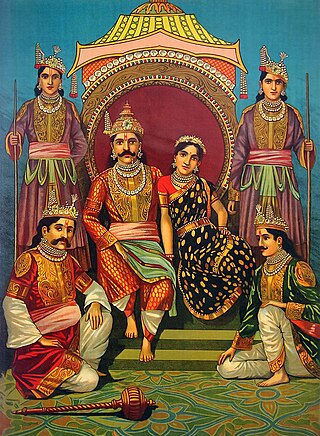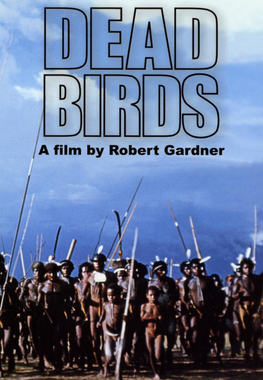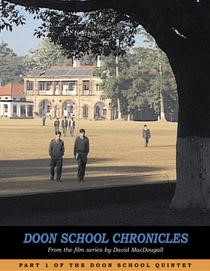Related Research Articles

Margaret Mead was an American cultural anthropologist who featured frequently as an author and speaker in the mass media during the 1960s and the 1970s.

Polygyny is the most common and accepted form of polygamy around the world, entailing the marriage of a man with several women.

Polyandry is a form of polygamy in which a woman takes two or more husbands at the same time. Polyandry is contrasted with polygyny, involving one male and two or more females. If a marriage involves a plural number of "husbands and wives" participants of each gender, then it can be called polygamy, group or conjoint marriage. In its broadest use, polyandry refers to sexual relations with multiple males within or without marriage.
Polygamy is the practice of marrying multiple spouses. When a man is married to more than one wife at the same time, sociologists call this polygyny. When a woman is married to more than one husband at a time, it is called polyandry. In sociobiology and zoology, researchers use polygamy in a broad sense to mean any form of multiple mating.

Dead Birds is a 1963 American documentary film by Robert Gardner (1925–2014) about the ritual warfare cycle of the Dugum Dani people who live in the Baliem Valley in present-day Highland Papua province on the western half of the island of New Guinea in Indonesia. The film presents footage of battles between the Willihiman-Wallalua clan and the Wittaia clan with scenes of the funeral of a small boy killed by a raiding party, the women's work that goes on while battles continue, and the wait for enemy to appear. In 1964 the film received the Grand Prize "Marzocco d'Oro" at the 5th Festival dei Popoli rassegna internazionale del film etnografico e sociologico in Florence, Italy, the Robert J. Flaherty Award given by the City College of New York, and was a featured film at the Melbourne Film Festival. In 1998, Dead Birds was included in the annual selection of 25 motion pictures added to the National Film Registry of the Library of Congress. being deemed "culturally, historically, or aesthetically significant" and recommended for preservation. Dead Birds has come to hold canonical status among ethnographic films.

Visual anthropology is a subfield of social anthropology that is concerned, in part, with the study and production of ethnographic photography, film and, since the mid-1990s, new media. More recently it has been used by historians of science and visual culture. Although sometimes wrongly conflated with ethnographic film, visual anthropology encompasses much more, including the anthropological study of all visual representations such as dance and other kinds of performance, museums and archiving, all visual arts, and the production and reception of mass media. Histories and analyses of representations from many cultures are part of visual anthropology: research topics include sandpaintings, tattoos, sculptures and reliefs, cave paintings, scrimshaw, jewelry, hieroglyphics, paintings and photographs. Also within the province of the subfield are studies of human vision, properties of media, the relationship of visual form and function, and applied, collaborative uses of visual representations.

The Turkana are a Nilotic people native to the Turkana County in northwest Kenya, a semi-arid climate region bordering Lake Turkana in the east, Pokot, Rendille and Samburu people to the south, Uganda to the west, to the South Sudan and Ethiopia to the north.
The USC Center for Visual Anthropology (CVA) is a center located at the University of Southern California. It is dedicated to the field of visual anthropology, incorporating visual modes of expression in the academic discipline of anthropology. It does so in conjunction with faculty in the anthropology department through five types of activities: training, research and analysis of visual culture, production of visual projects, archiving and collecting, and the sponsorship of conferences and film festivals. It offers a B.A. and an MVA in Visual Anthropology.
The Human Studies Film Archives (HSFA) is a sister archive to the National Anthropological Archives within the Smithsonian's National Museum of Natural History. HSFA preserves and provides access to ethnographic films and anthropological moving image materials. It is located at the Smithsonian Museum Support Center in Suitland, Maryland.
The Margaret Mead Film Festival is an annual film festival held at the American Museum of Natural History in New York City. It is the longest-running, premiere showcase for international documentaries in the United States, encompassing a broad spectrum of work, from indigenous community media to experimental nonfiction. The Festival is distinguished by its outstanding selection of titles, which tackle diverse and challenging subjects, representing a range of issues and perspectives, and by the forums for discussion with filmmakers and speakers.
Herb Di Gioia is an Italian, American documentary film director who pioneered the field of "observational cinema" in his work and impacted ethnographic film making through his contributions as a teacher at Britain’s National Film and Television School. Di Gioia's films are recognized as a significant departure from the better-known works of other observational documentarians, like David and Judith MacDougall.

An ethnographic film is a non-fiction film, often similar to a documentary film, historically shot by Western filmmakers and dealing with non-Western people, and sometimes associated with anthropology. Definitions of the term are not definitive. Some academics claim it is more documentary, less anthropology, while others think it rests somewhere between the fields of anthropology and documentary films.
The Wedding Camels is an ethnographic film directed by David MacDougall and Judith MacDougall, filmed in 1974 and released in 1980, that examines the negotiations and cultural practices that surround the tradition of the Turkana people of Kenya of giving a bridewealth before a wedding. The film was funded and distributed by the University of California Extension Center for Media.
The Mundugumora.k.a.Biwat are an indigenous people of Papua New Guinea. They live on the Yuat River in East Sepik Province, Papua New Guinea, and speak the Mundugumor language.

Ethnocinema, from Jean Rouch’s cine-ethnography and ethno-fictions, is an emerging practice of intercultural filmmaking being defined and extended by Melbourne, Australia-based writer and arts educator, Anne Harris, and others. Originally derived from the discipline of anthropology, ethnocinema is one form of ethnographic filmmaking that prioritises mutuality, collaboration and social change. The practice's ethos claims that the role of anthropologists, and other cultural, media and educational researchers, must adapt to changing communities, transnational identities and new notions of representation for the 21st century.
Olivia Lucia Carrescia is an American independent filmmaker best known for her documentary trilogy on the indigenous Maya of Todos Santos Cuchumatán, a traditional village in highland Guatemala. The films have been distributed internationally and purchased by Latin American Studies Departments of every major university in the United States.

David MacDougall is an American-Australian visual anthropologist, academic, and documentary filmmaker, who is known for his ethnographic film work in Africa, Australia, Europe and India. For much of his career he co-produced and co-directed films with his wife, fellow filmmaker Judith MacDougall. In 1972, his first film, To Live with Herds was awarded the Grand Prix "Venezia Genti" at the Venice Film Festival. He has lived in Australia since 1975, and is currently a professor in the Research School of Humanities & the Arts at Australian National University.

Judith MacDougall is an American visual anthropologist and documentary filmmaker, who has made over 20 ethnographic films in Africa, Australia and India. For many of the films, she worked with her husband, David MacDougall, also an anthropologist and a documentary filmmaker. Both of them are considered among the most significant anthropological filmmakers in the English-speaking world.

The Doon School Quintet is a five-part ethnographic film series made by the American visual anthropologist and documentary filmmaker David MacDougall, between 1997 and 2000, at The Doon School, an elite all-boys boarding school in India. For thirteen months over three years, MacDougall lived with the students and was given unprecedented access for filming inside the residential campus. By the end, MacDougall had more than 85 hours of material, which he edited into 5 parts, with a total duration of about 8 hours. The project ranks among MacDougall's most ambitious and longest works and is the only film series in his oeuvre.
References
- 1 2 3 MacDougall, Judith and David (2005). "A Wife Among Wives". Taiwan International Ethnographic Film Festival. Archived from the original on 2020-08-03. Retrieved November 10, 2020.
- ↑ "Margaret Mead Film Festival Oct. 17-18". The New York Times . October 7, 1981. Retrieved 23 May 2021.
- 1 2 "Wife Among Wives, A". RoninFilms. Archived from the original on 2012-03-24. Retrieved November 19, 2020.
- 1 2 Mbula, J (2004). East Africa in Transition: Images, Institutions, and Identities. University of Nairobi Press. p. 223. ISBN 9789966846563.
- 1 2 Young, Colin (1982). MacDougall Conversations. Royal Anthropological Institute of Great Britain and Ireland.
- 1 2 3 Blount, Ben G. (1984). "Turkana Conversations Trilogy". American Anthropologist. 86 (3): 803–807. doi:10.1525/aa.1984.86.3.02a01050.
- ↑ Grimshaw, Anna (2012). The Ethnographer's Eye: Ways of Seeing in Anthropology. Manchester: Cambridge University Press. pp. 121–148. ISBN 9780521773102.
- ↑ "David and Judith MacDougall". SubSol. Archived from the original on 2004-12-27. Retrieved November 19, 2020.
- ↑ Naitrends (June 23, 2017). "Turkana Wedding, An Amazing Kenyan Tradition of the 21st Century". NaiTrends. Archived from the original on 2017-09-25. Retrieved November 10, 2020.
- ↑ Notenbaert, An; Thornton, Philip; Herrero, Mario. Livestock Development and Climate Change in Turkana District, Kenya (PDF) (Report). International Livestock Research Institute. p. 7 – via Core.
- ↑ Shrage, Leslie (2013). Moral Dilemmas of Feminism. New York: Routledge. ISBN 9781134977765.
- ↑ Tikkanen, Amy. "Turkana". Britannica. Archived from the original on 2015-09-05.
- ↑ Yi, Ho (September 30, 2005). "Getting Global 2005 TIEFF opens up a window to diversity". The Taipei Times . Retrieved 23 May 2021.